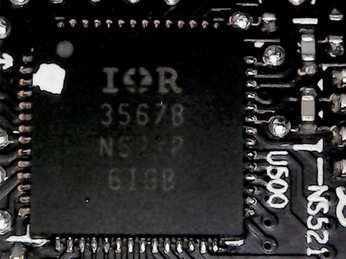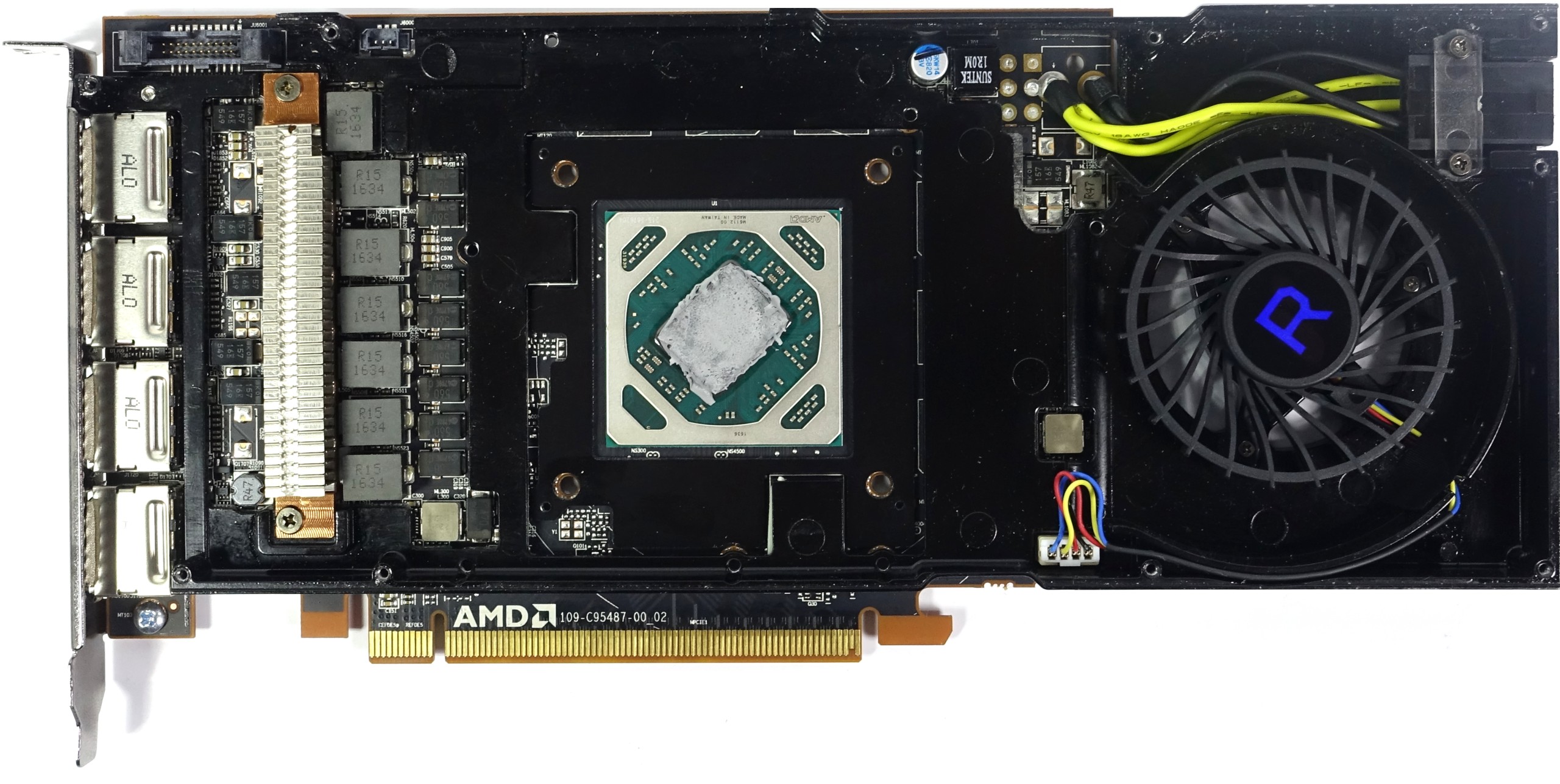AMD Radeon Pro WX 7100 Review
The FirePro brand is dead; long live the Radeon Pro. AMD puts its Polaris chips and reworked drivers to work in three new workstation graphics cards. We’re about to give the fastest model, the Radeon Pro WX 7100, a real workout.
Inside The Radeon Pro WX 7100
External and Connections
AMD's Radeon Pro WX 7100 is a thin, single-slot card that generally corresponds to the dimensions of the older FirePro W7100 and FirePro W7000. Arguing over colors can be fun, but we'll all get used to AMD's new shade of blue sooner or later.
With an installed length of 9.65” (from the slot bracket to the end of the card), an overall height of 4.13” (from the top of the motherboard slot to the top of card), and a single-slot-compliant depth of only 0.7”, AMD's WX 7100 sports a slender profile.
Looking from the back, the PCB is much shorter than its cooling solution suggests, similar to prior designs. You can see solder vias for a six-pin connector that must have been intended for more compact implementation.
Rotating the card reveals a gill-shaped air outlet, which unfortunately exhausts much of the waste heat back into your case, rather than pushing it out through a vent in the slot bracket.
The bottom of the card has no openings, so the motherboard below stays cool.
The six-pin auxiliary power connector sits at the end of the card. Plan for an extra inch of clearance beyond the back edge to accommodate a power cable. That probably isn't an issue in larger pedestal cases, but it could be an issue in small form-factor enclosures. Standard threads are drilled into the frame for securing the Radeon Pro with a bracket, but no such adapter is included.
There are four DisplayPort 1.4 outputs below a thin array of ventilation slots. They'll accommodate up to four 4K monitors, a single-cable 5K monitor, or two dual-cable 5K monitors.
Get Tom's Hardware's best news and in-depth reviews, straight to your inbox.
Cooling System Details
Remove the thin blue aluminum plate and you get an unobstructed view of a rather unique cooling solution. It consists of closed channels of folded aluminum fins with a vapor chamber underneath to move heat away from the GPU as quickly as possible. The VRMs have their own cooler with fins as well.
The fan is one that AMD has used for years. We're already familiar with it from this card's predecessors. Delta manufactures it, it spins at up to 5000 RPM, and we wouldn't call it quiet.
Most of the vapor chamber rests on the GPU. Beyond that, underwhelming contact with the underlying assembly and cooling frame help dissipate waste heat from the chamber somewhat.
This solution isn't optimal because it requires high static pressure to use the cooler efficiently at up to 140 watts. But the measurement results speak for themselves.
The previously mentioned mounting frame cools all eight memory modules and also secures the VRM heat sink, which has its own channel fins. These aren't really efficient though, since some of the airflow escapes from the housing before reaching them, significantly reducing pressure through the channels.
Circuit Board Layout and Power Supply
Uncovering the PCA rewards us with an interesting look at AMD's layout. It’s immediately clear that this implementation has nothing to do with the Radeon RX 480 reference design; rather, it's significantly more complex. That soldered cable extension with the six-pin connector, which is later fastened to the mounting frame and an in-line fuse, is notable.
AMD uses a total of eight 1GB K4G80325FB-HC28 memory modules with a maximum clock rate of 1750 MHz. The use of -HC28 modules instead of faster -HC25 ones could be attributable to thermal issues that higher frequencies might cause.
The GPU’s PWM controller is an International Rectifier IR3567B. It controls the processor's five power phases. Three are connected to the auxiliary six-pin power connector and two trace down to the motherboard slot. It also manages two phases corresponding to the the GDDR5 memory.


All seven phases employ Infineon HEXFETs. While there's an IRF6811 on each high side, the low side has an IRF6894M with a MOSFET that already integrates the necessary Schottky diode. A special feature of both MOSFET packages is their flat metal housing (<28 mils) that allows double-sided cooling.
The other PWM controllers on the board come from Green Solution Technology, where the GS9230 controls the converter for the memory and the GS9238 serves as a stand-alone solution for the remaining components.


It certainly appears that AMD put a lot more effort into the Radeon Pro's design than the Radeon RX 480. This should manifest as higher efficiency under load.
Current page: Inside The Radeon Pro WX 7100
Prev Page Introduction & Overview Next Page Performance Benchmarks
Igor Wallossek wrote a wide variety of hardware articles for Tom's Hardware, with a strong focus on technical analysis and in-depth reviews. His contributions have spanned a broad spectrum of PC components, including GPUs, CPUs, workstations, and PC builds. His insightful articles provide readers with detailed knowledge to make informed decisions in the ever-evolving tech landscape
-
xenol Why can't cards of this design make it to the consumer market? I'm sure there are lots of people yearning for a single-slot cooler card.Reply
On that note, it's ridiculous that AIBs slap on a two-slot cooler on lower end cards. -
Rookie_MIB The reason why it's single slot is simple enough, when you're looking to cram as much compute performance as possible in a computer, the slot spacing matters. There are some workstations which are ATX based which have 7 PCIe x 16 (or x8 after PLX switching) capable slots. As long as the cards can reliably remain below their temp threshold - that's all that matters.Reply
With a gaming style cooler (dual slot) it reduces the amount of compute performance without really increasing the speed as much. For example. If with a dual slot cooler, you can increase the core/VRAM speed 25-50% (because power usage increases exponentially with speed), that doesn't compare with being able to increase the compute by 100% by adding a second card. -
SliSpitfire 3.5 dB(A) more IS actually more than twice the perceived noise (logarithmic scale).Reply -
Virtual_Singularity Thanks for the review. They're a great value for their price. One of the biggest changes at AMD since last year, and especially within the past 6 months or so, has been the increased attention to driver optimization for their dGPUs. Their enterprise-oriented cards also benefit. The coolers on these single slot cards may not be the greatest, but for their intended use they're fine.Reply -
FormatC The price is the best argument. But let's also wait for next Sunday/Monday.Reply
Nvidia will show on their booth (Solidworks World) the new Pascal Quadro lineup.
It's under NDA until next week, but I have the most of this cards already in my hands.
I plan a showdown after this NDA with all available cards from AMD and Nvidia
in real-world applications. I'm sure, the price of the WX7100 will help to survive,
also after the launch :)
The WX4100, 5100 and 7100 are here, also the Quadro P5000, P6000 and a few
not launched cards ;)
BTW:
The Quadro P6000 beats the Titan X Pascal in Gaming. I tried it with Resident Evil 7
in 4K and Shadow Cache On. Impressive, but expensive. :D
The WX7100 is from my sight the better RX480. Closer to the sweet spot and more
efficient. And only marginally slower. The RX480 is the result of the stupid arms race
against the GTX 1060 and might be more interesting without such high clicks/voltages.
Just sitting on a RX480 roundup with up to eight cards and some cards takes more than
200 Watts in gaming loops. This is simply too much for a few FPS more.
Polaris is not bad, if the chips are used as constructed. All stronger OC is mostly painful.
-
shrapnel_indie Reply19247867 said:3.5 dB(A) more IS actually more than twice the perceived noise (logarithmic scale).
Actually, 3 dB isn't perceived as twice as loud. you need 10 dB for that.
http://www.noisehelp.com/decibel-scale.html
http://www.acousticsbydesign.com/acoustics-blog/perception-vs-reality.htm
http://www.siue.edu/~gengel/ece476WebStuff/SPL.pdf (Page 5) -
TJ Hooker Reply
It would be ~twice the power, but human perception of sound is not linear with power.19247867 said:3.5 dB(A) more IS actually more than twice the perceived noise (logarithmic scale). -
bak0n Reply19247750 said:Why can't cards of this design make it to the consumer market? I'm sure there are lots of people yearning for a single-slot cooler card.
On that note, it's ridiculous that AIBs slap on a two-slot cooler on lower end cards.
RX460 is now out as a single slot card. But yes, I agree with you. -
FormatC I like the low-profile cards, because I have a lot of very small ITX-cases with no space inside :)Reply









